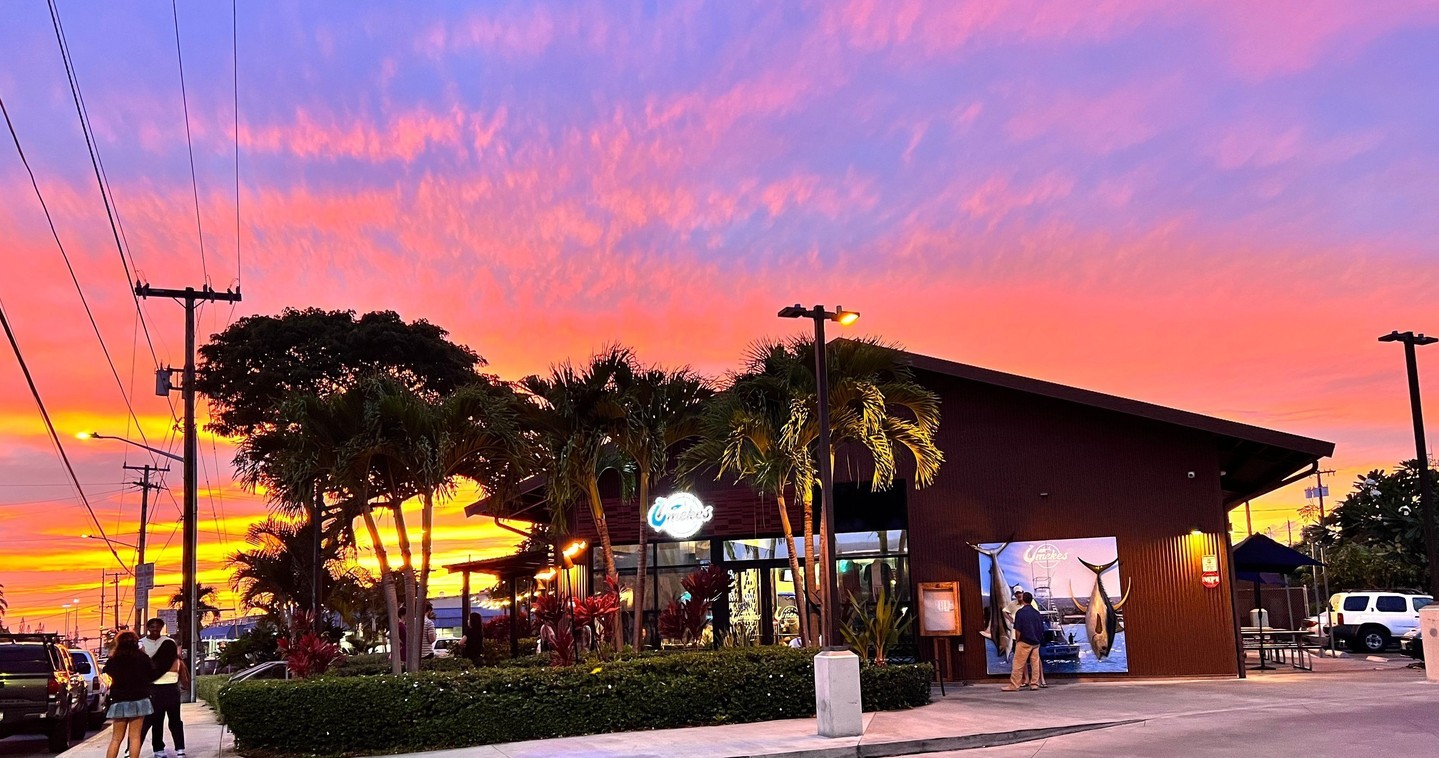Would a trip to Hawai’i be complete without attending at least one lūʻau? Maybe, but it would be significantly less fun! A lūʻau means lots of more or less traditional food with something for everyone, it means music, dancing, storytelling, it means buying carved tiki figurines from good-humored vendors, and also learning some hula steps, Hawaiian games, and Hawaiian history – and it usually means fire-eaters making a splash during the show’s splendid finale! If you have the time and money to spare, we highly recommend planning for a lūʻau while you visit the Island.
The term lūʻau actually refers to a traditional food often served during Hawaiian celebrations – octopus or chicken cooked with taro leaves and coconut milk (pretty delicious concoction, by the way!). Reporters in the 19th century weren’t exactly famous for their fervor for accurately representing foreign cultures, and so they apparently misconstrued “lūʻau” to refer to the feast itself, and the name stuck.
While we typically enjoy the food at a lūʻau as much as the next guy, we mainly go for the storytelling and entertainment. Many of the (in our opinion) better lūʻaus will make sure to tell you a little bit about the dances you are watching. You may learn, for example, that hula is not simply beautiful, elegant movement, but it is a formalized, expressive dance where each movement mirrors the meaning of the corresponding mele (song). Some lūʻaus will also convey a bit of history about how the Hawaiian Islands were discovered and settled by Polynesian seafarers.
Even though you may learn a lot about Hawaii and Polynesia when attending a lūʻau, this type of celebration is not as deeply rooted in Hawaiian tradition as you might think. The first ever lūʻau, referred to as “aha’aina” then, was apparently put on in 1819. Up until then, the ancient kapu system of laws had, among many other things, forbidden women and men from eating together. King Kamehameha II, spurred on by his guardian, Queen Ka’ahumanu, abolished the kapu system in 1819, put simply, by having a meal with Ka’ahumanu and his mother Keopuolani. Since then, lūʻaus have become much less of a political statement, and more a typical style of celebration in Hawai’i for anything from a wedding to a graduation to a birthday.
So while it is a great way of experiencing traditional Hawaiian grindz alongside vibrant entertainment, a lūʻau is not only fun for the whole family but can also be a good way to start learning about Hawaiian culture. Sometimes, lūʻaus have apparently devolved into mere circus shows with lackluster food, but we have two recommendations for lūʻaus on the Big Island that will not only feed you well but also teach you a thing or two about Hawaiian tradition and culture.
Feast & Fire Lu’au at the Keauhou Outrigger
This lūʻau, which is within walking-distance of our condo, is pretty new, but you can not tell from the proficiency of the dancers and singers, the deliciousness of the food, or the welcoming salesmanship of the vendors. Before the (funny! beautiful!) show starts, you can roam the grounds, shop at the little booths that vendors such as
Makau Nui have set up, craft your own flower crown or play a game of ʻulu maika with the friendly and engaging artists from the show. Only downside, for me, was that the vendors packed up and left once the show had started. On the other hand, that may have saved me a lot of money…
While you collect your drinks at the bar, the food is served at the table rather than having to get up and fill your own plate at a buffet. There is taro chips, tropical fruit, and sweet bread rolls for starters, and the main course includes the classics like lomi lomi salmon, squid lūʻau, ube, kalua pork, white rice, and kalbi ribs. For dessert, we were served some mini malasadas.
Voyagers of the Pacific Lūʻau at the Royal Kona
We went to this Lūʻau once as paying guests and have witnessed parts of it countless times from a room in the Royal Kona’s Lagoon Tower or from Don’s Mai Tai Bar. (The line “Kailua Kona, where the Sun is born” from one of their standard songs is permanently stuck in my head, and I love it.) It is absolutely worth the price of admission for both the food and the beautiful and educational, traditional show.
Before the show starts, you are invited to learn some basic hula steps from some of the dancers, and there’s also a few vendors that typically stay until after the show. You pick up your drinks from a unique, canoe-shaped bar and get to watch the imu ceremony, where a whole pig is unearthed from the traditional earth oven it has been baking in for a day.




























































